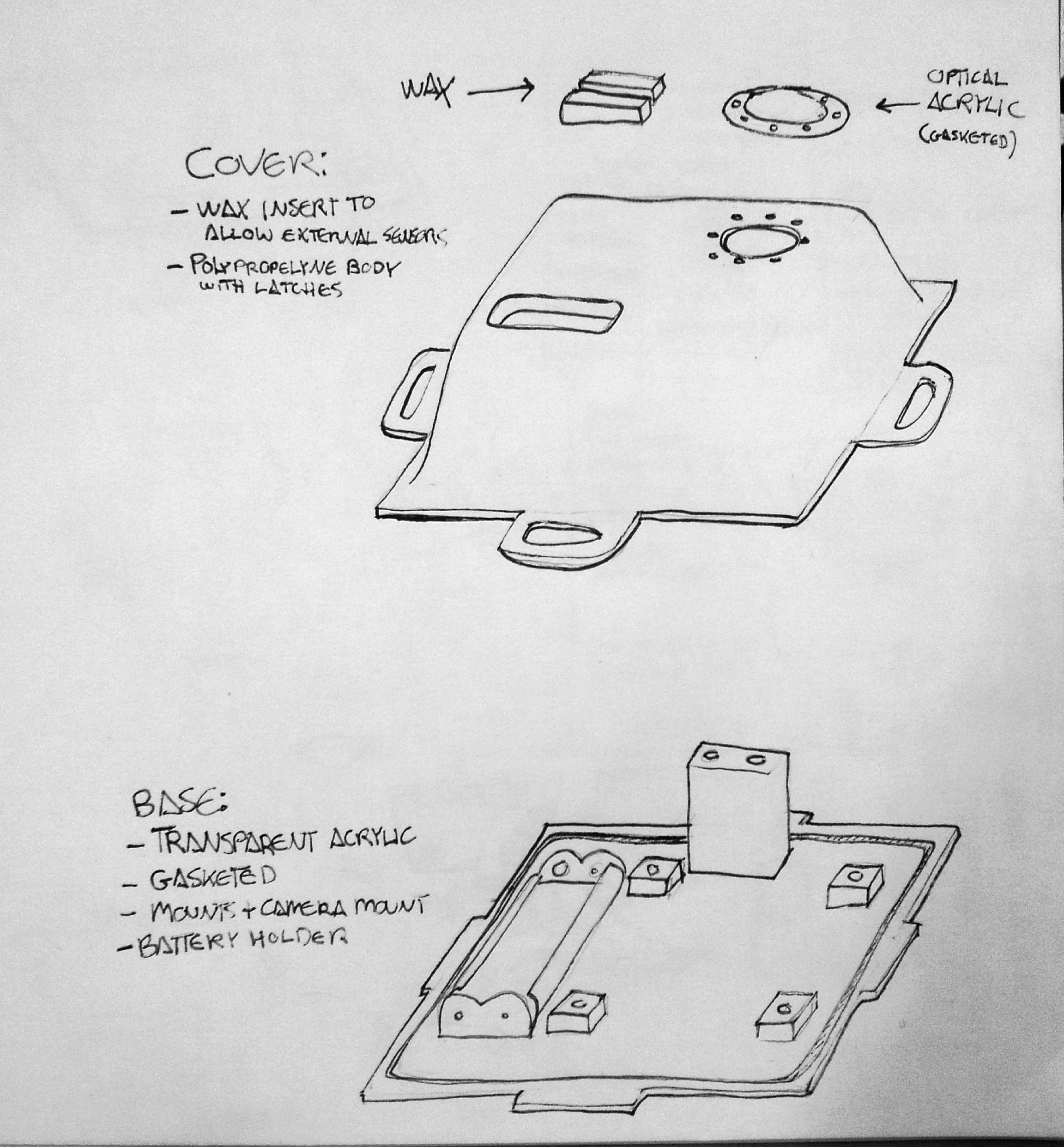IR/visible light camera dreams & parts
I’ve been trying to envision what an Visible Light/IR camera would look like as a product. the sketch above is of a weatherproof tupperware-like case with a battery holder and a means of wiring external sensors.
Cases
I can’t find any outdoor-specific cases for the Pi, and none I’d like to mount a camera to. thats why I envisioned my own. The bottom part is easy, as its made out of acrylic and could be glued up by hand. the top part I envision as polypropylene, like tupperware, because then it could have hinges. A part like that would need to be molded. For now I’ll stick to tupperware, the cases on the raspberry pi site weren’t intriguing enough.
Camera strategies:
Camera Pairs
Currently, Public Lab IR/Visible light cameras are created with a pair of cameras.
Advantages This is awesome for photographing things that are at enough of a distance to ignore the different lens positions, but not all that great up close. Its also as fast as the lens, and webcams are cheap. Can do video.
Disadvantages Aligning two cameras while prototyping can be tough. Up close objects like bugs and animals–which are great to look at in Near IR– are hard to photograph with two lenses. keeping the settings and focus of two cameras in synch can be hard.
Raspberry Pi foundation has demoed two of their upcoming camera boards running in 720p video
Single Camera with filter switch
I’m going to pursue a different strategy than camera pairs, using a solenoid-driven filter switcher like those found in security cameras. Here is one for $50, half way down the page. I’m seeking a cheaper one, they’re available in quantity for $2 or less The term I’ve found to search is “Dual-filter swing solenoid.”
Advantages potentially cheaper than using two cameras, no alignment problems, can take close-up images. Will make a genuine mechanical clicking sound when used.
Disadvantages less than half as fast- has to take two images every time. Unlikely to be able to do video. Introduces another circuit into the control system.
Raspberry Pi as a camera
The Rasberry Pi is a powerful board for the price, but it leaves several things to be desired as a camera platform.
The Pi has no clock– it therefore can’t keep track of time when turned off, which is a pain because photos can end up improperly time-stamped. Without a clock the Pi also can’t work for time lapse in the field without a really, really hefty battery.
the Pi is particularly finicky about power and needs a steady power supply. A regulator is needed to attach a battery. lack of a regulated power supply can make attaching sensors difficult.
The Pi doesn’t have any power protection on its GPIO, so plugging in sensors is potentially dangerous.
There are a few extension boards to deal with these problems. 2-Watt Elements Raspy Juice is promising because it combines power regulation and a real-time clock with an ATmega 168 (like the older arduinos), solving all these issues. But its $42 for some otherwise quite cheap components.
The Slice of Pi is the cheapest ad-on for extended I/O capabilities but doesn’t add power management or an RTC, which are what we really need for a camera.
A full list of RaspPi expansion boards is here.
Archived 4th of March 2018 from Publiclab.org.
